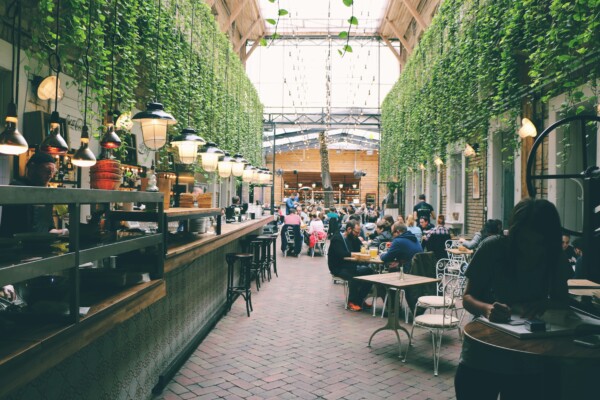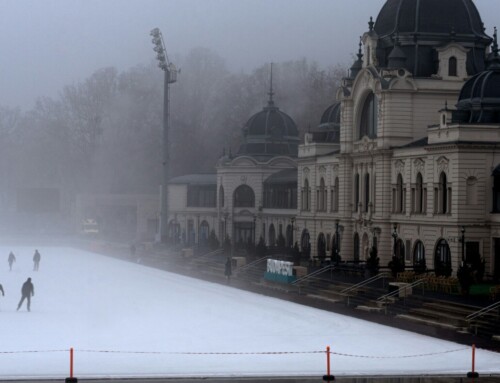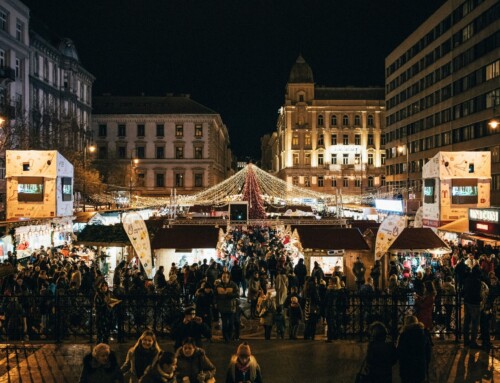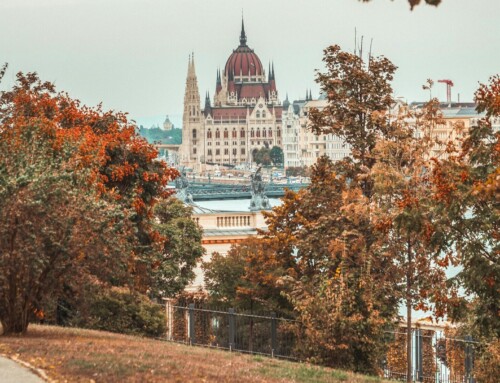Ruin Bars in Budapest: Chaotic Beauty and Unique Urban Spaces
Budapest is famous for its thermal baths and monumental architecture. However, its true creative heart beats in the Jewish Quarter (District VII). This area is home to the revolutionary ruin bars in Budapest. These aren’t just bars; they are unique cultural spaces. They were born from derelict pre-war buildings. They transformed urban decay into eclectic, multi-functional art.
If you are visiting in November, the ruin bars offer the perfect warm, indoor, and unforgettable atmosphere. This guide will take you beyond the beer. We explore the history, the art, and the six essential ruin bars you cannot miss. We show you why these places define the city’s character.
The History and Concept: From Ruin to Culture
The story of the ruin bar movement (romkocsma in Hungarian) begins in the early 2000s. The movement started in the severely neglected courtyards of the inner District VII. Many buildings were left abandoned after World War II and the Communist era. The district was economically depressed.
Creative entrepreneurs saw potential in these crumbling spaces. They chose to embrace the decay rather than restore it perfectly. They left the exposed brick and damaged plaster. They filled the space with vibrant street art. They used mismatched salvaged furniture. The result is a curated chaos. This style is unique to ruin bars in Budapest.
This movement is a testament to Budapest’s resilience. It turned neglect into a globally recognized cultural phenomenon. It is more than just drinking; it is urban renewal through art.
Why Visit Ruin Bars in November?
While the outdoor gardens are lively in summer, the ruin bars in Budapest are fully heated and covered in winter. The cold weather makes the internal, eclectic spaces feel even more cosy. The quieter, earlier hours on weekdays are perfect for exploring the art installations. You avoid the massive crowds this way. The warm, enclosed atmosphere offers a perfect contrast to the cold November air outside.
The Six Defining Ruin Bars in Budapest
Each ruin bar tells a different story. They reflect the diverse social and artistic currents of the city. We explore six sites that define the genre, from the chaotic pioneer to the intimate music cellar, representing the best of the ruin bars in Budapest.
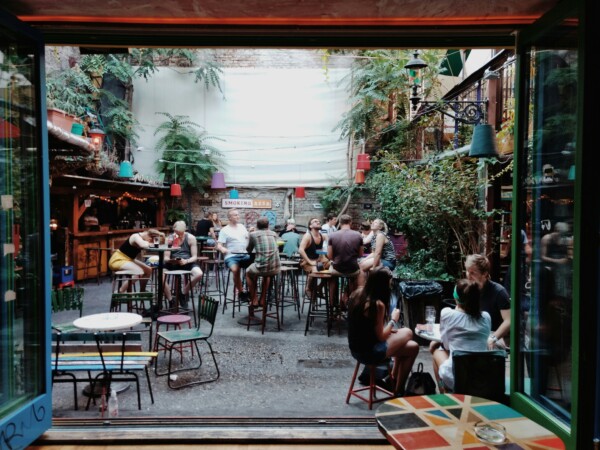
Szimpla Kert (The Pioneer and Cultural Hub)
Szimpla Kert is the original ruin bar. It opened in the early 2000s. It set the standard for the entire movement. Its name means “Simple Garden” in Hungarian. It is a sprawling, labyrinthine maze of bars. You will see old bathtubs used as seating. It features repurposed vintage objects everywhere.
The Szimpla Kert atmosphere is chaotic, artistic, and constantly evolving. It feels like an ever-changing open-air museum. Szimpla Kert transforms in daylight. Every Sunday, 9 AM – 2 PM, it hosts a popular Farmers’ Market (Termelői Piac). They offer local produce, cheese, and crafts. This is the best time to see the incredible decor and art in the daylight. This duality makes it a true cultural complex.
- Location: Kazinczy utca 14, 1075 Budapest
- Website: https://szimpla.hu/
Instant-Fogas Komplexum (The Party Labyrinth)
The Instant-Fogas Komplexum is the largest, most dynamic party complex in the city. It is a fusion of multiple ruin bars and dance floors. It covers over 1,200 square meters across two buildings. This location is ideal for those who primarily want to dance and experience a massive nightlife atmosphere.
The atmosphere is high-energy and huge. It is designed for late-night clubbing. You will find different genres across multiple rooms (Robot, Frame, Larm). The name “Fogas” comes from the building’s previous use as a dentist’s office. The vast complex is fully heated and roofed. This makes it the city’s primary nightlife destination year-round. It is a one-stop destination for an entire night out.
- Location: Akácfa utca 49-51, 1073 Budapest
- Website: https://instant-fogas.com/
Doboz (The Mainstream Gallery Ruin Bar)
Doboz means “Box” in Hungarian. It is a popular, yet sophisticated, ruin bar. It is known for its sleek design and massive size. Unlike the chaotic, handmade style of Szimpla, Doboz is professionally designed. It often attracts a more commercial, stylish crowd.
The atmosphere is sleek and visually impactful. It feels like a high-end club built into ruins. The central courtyard features a massive Red Box structure. It houses the main bar and a huge, illuminated Tree of Life sculpture. It focuses on high-quality light installations and modern art. It showcases how the ruin bar concept has evolved into mainstream nightlife. It is a great spot if you prefer style over chaos.
- Location: Klauzál utca 10, 1072 Budapest
- Website: https://doboz.co.hu/
Mazel Tov (The Elegant Ruin Restaurant)
Mazel Tov offers a modern, refined take on the ruin bar concept. Housed in a former residential building, its focus is equally on gastronomy and culture. Its clean lines and soft lighting distinguish it from the older, dirtier venues.
The atmosphere is elegant, light-filled, and sophisticated. It features a bright urban garden atmosphere. The design is inspired by Middle Eastern aesthetics. It is an Israeli-style “ruin restaurant.” It serves delicious Middle Eastern and Mediterranean street food. This makes it perfect for dinner. It is designed as a comfortable, fully covered and heated restaurant space. It offers culture without the traditional bar chaos.
- Location: Akácfa utca 47, 1072 Budapest
- Website: https://mazeltov.hu/
Csendes Létterem (The Quiet Art Cafe)
Csendes Létterem is often overlooked by party tourists. It is a gem for those seeking a more subdued, cultural experience. It is located near Károlyi Kert (garden).
The atmosphere is intimate, artsy, and eccentric. It functions primarily as a café during the day. Its atmosphere is calm and reflective. The walls are covered in bizarre toys, antique objects, and broken doll parts. This gives it a charmingly eerie look. It is full of history. It is one of the best spots to grab a quiet coffee or read a book in a ruin bar setting. This makes it perfect for a late November afternoon visit. It is a beautiful contrast to the loud party venues.
- Location: Ferenczy Istvén u. 5, 1053 Budapest
- Website: https://www.facebook.com/csendesvintagebar/https://www.csendes.hu/
Lámpás (The Underground Music Cellar)
Lámpás means “Lantern” in Hungarian. This venue is located entirely underground in a cellar. It is one of the more authentic, classic underground spots in the Jewish Quarter.
The atmosphere is cozy, dimly lit, intimate, and often smokey. It is a favourite among locals. It features live music most nights. It focuses on jazz, blues, and acoustic genres. It offers a genuine Budapest live music experience. Being entirely underground, it is naturally warm and sheltered from the weather. It is a great alternative to the larger party complexes. It offers a real piece of Budapest nightlife history.
- Location: Dob utca 15, 1074 Budapest
- Website: https://www.facebook.com/lampaspub/
Conclusion: A Cultural Phenomenon
The ruin bars in Budapest are far more than drinking spots. They are a unique blend of urban architecture, grassroots art, and resilient history. They show how a city can reinvent its neglected spaces. They are now an inseparable part of Budapest’s identity.
Whether you choose the artistic chaos of Szimpla, the dance floors of Instant-Fogas, or the quiet atmosphere of Csendes, these venues guarantee an unforgettable experience. They are especially welcoming when escaping the cold November air.
Do you want to step outside the bars and see the history of the Jewish Quarter come alive? Book a private walking tour to understand the WWII history and architectural secrets that led to the creation of the ruin bars.




